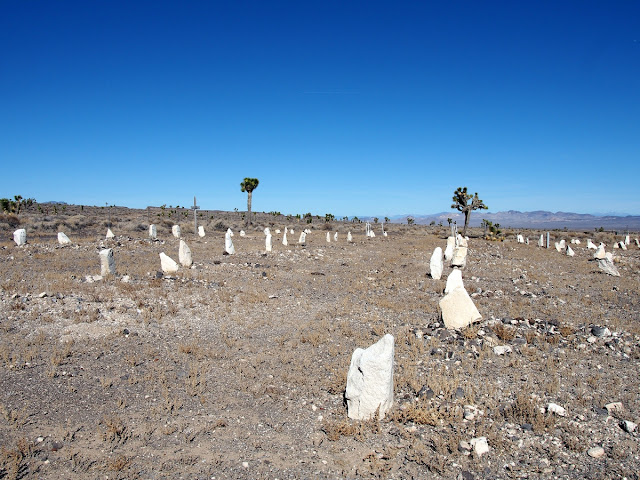June 13, 2016 — The stones were bright white and uneven, like teeth pushing up from the desert, stark as bone against all the dead brownness. Words were painted on their surfaces in large red or black letters. It was a cemetery. Even if it did look like a fake cemetery that a bunch of morbid elementary school kids made for a class project. And that’s not even the best reason to love the cemetery.
The town of Goldfield, Nevada, was established in 1903. It was a mining town. For gold and silver, but mostly gold. The town’s name was a public relations move to attract more people to the area. Before that, the community was called Grandpa. I assume another reason was that the residents felt icky about saying that they lived in Grandpa.
Of course, Goldfield wanted people, and a side effect of that is dead people. So the residents made a cemetery as soon as they had a body to stick in it. And then they had to move the cemetery.
But mostly the cemetery is full of miners, meaning both their lives and afterlives were/are spent underground. I know this because the occupations of the deceased are sometimes lettered on the white gravestones.
Volunteers keep the stones painted and looking nice, but it’s the epitaphs that really make the cemetery stand out.

Because in Goldfield Cemetery, epitaphs include a piece of information that I believe should be included in the epitaphs of every single modern gravestone, as well: cause of death. The cemetery in nearby Tonopah does the same thing. In the case of Goldfield Cemetery, those causes of death range from being shot to being shot to being shot, although there is a self-strangulation (which I assume is the jail suicide). There’s also the one cause of death that has probably single-stonedly made Goldfield Cemetery so famous among us taphophiles: “died eating library paste.”
The West was wild, man.
Join the OTIS Club and get access to even more oddity content every week.






